feature
Shifting From Learning About to Figuring Out
PD Resources to Support Classroom Change
Science Scope—November/December 2021 (Volume 45, Issue 2)
By Katherine L. McNeill, Renee Affolter, and Michael Clinchot
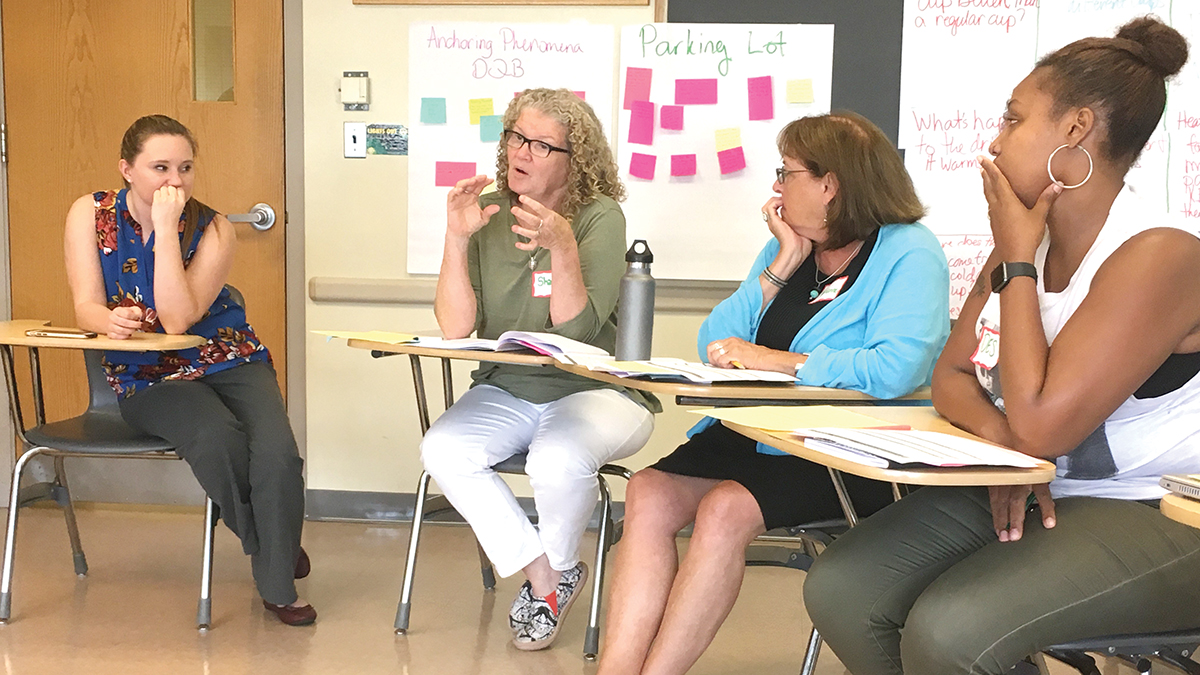
Recent reform documents (National Research Council 2012) and the Next Generation Science Standards (NGSS Lead States 2013) have argued for key shifts in science instruction. They offer a vision in which science instruction shifts from “learning about” to “figuring out” through phenomena-driven instruction. No longer should students be memorizing disconnected facts, such as the systems of the body or the equation for cellular respiration. Rather, students should be investigating phenomena from the natural and designed worlds as they build science ideas over time as a classroom community. Students should also be engaging in science practices and wrestling with disciplinary core ideas as they make sense of phenomena (Schwarz, Passmore, and Reiser 2017).
These key shifts offer a more equitable vision of science instruction in which all students are known, heard, and supported with access and opportunities for rich science learning (Bang et al. 2017). Moving away from telling students about science toward students figuring out science through their own experiences and questions can better support students who have been typically marginalized in science, such as students of color, students who speak first languages other than English, and students from low-income communities.
But shifting science classroom instruction is not easy. Teachers need high-quality professional learning opportunities to support them in this work as they try out and reflect on using new instructional strategies in their classrooms. In this article, we describe professional development (PD) resources we have developed to support these classroom changes.
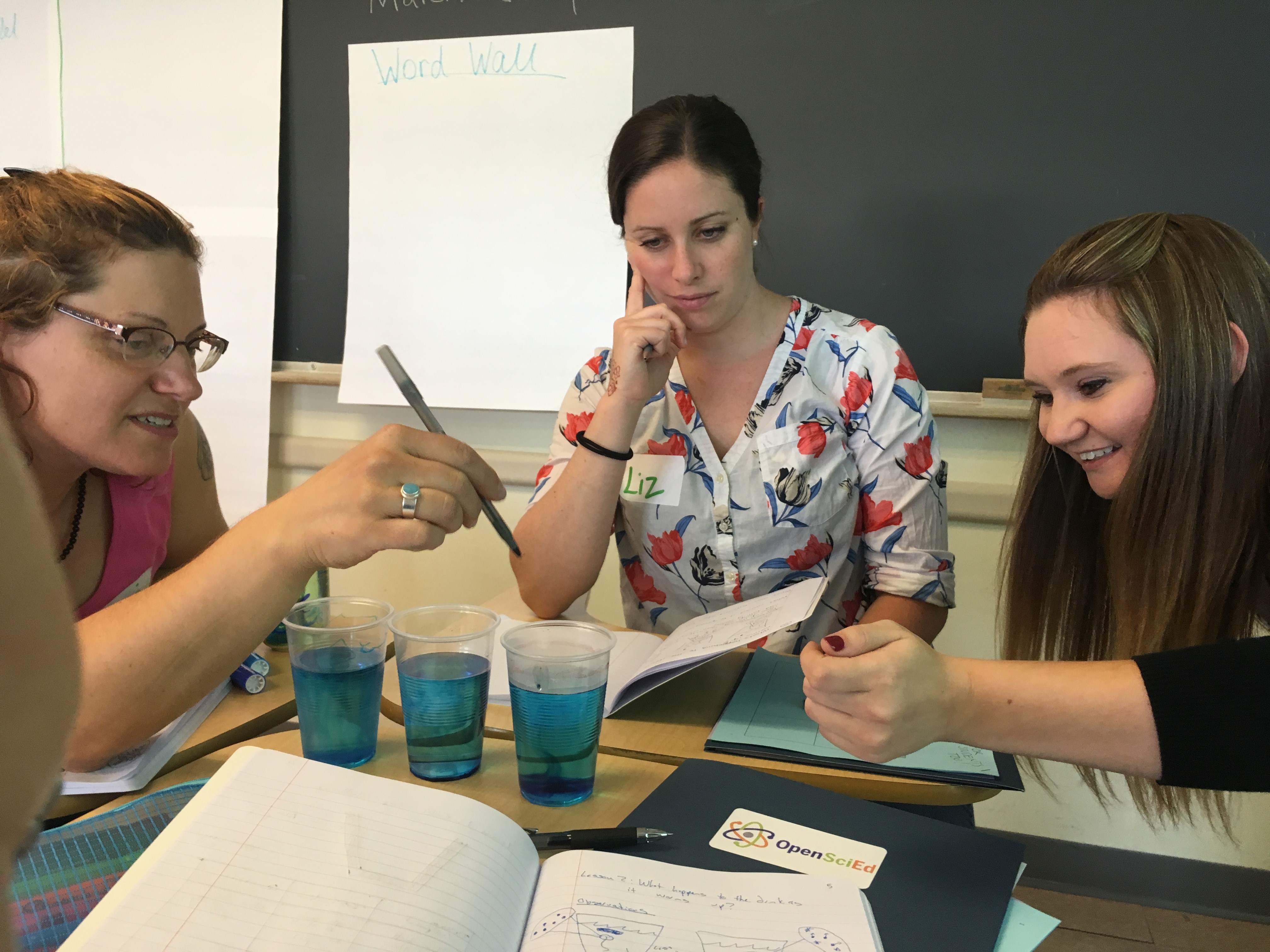
Key instructional elements to support PD
To support teachers in this important work of shifting classroom instruction, we used five key instructional elements to examine, reflect on, and analyze classroom instruction, curriculum, and resources as part of a two-day PD workshop. These elements could also be used to support ongoing professional learning in a variety of formats, such as professional learning communities (PLCs), coaching models, or individual reflection. The PD work should be grounded in curriculum and/or examples clearly connected to classroom instruction.
During the PD, we used the elements to introduce and reflect on the OpenSciEd middle school science curriculum. OpenSciEd is a nonprofit organization that provides high-quality, freely available science curriculum and professional learning materials designed to align with the NGSS using a storyline approach (see Online Resources). Specifically, we worked with 70 science teachers split evenly across sixth, seventh, and eighth grades during the two-day workshop.
In this article, we first introduce the instructional elements and then describe four examples of PD activities in which they can be used: (1) to examine classroom video and/or instruction to develop a shared understanding, (2) to support individual reflection on practice to identify successes and challenges, (3) to examine classroom video and/or instruction to identify teacher moves and strategies, and (4) to analyze curriculum and resources to maximize NGSS alignment.
These elements encompass key shifts from learning about to figuring out that empower student voice and engagement. They highlight that instruction should be phenomena based such that it is centered on figuring out phenomena or solving problems rather than learning discrete facts or definitions. Furthermore, the instruction should be coherent for students as it is driven by students’ questions and ideas as well as driven by evidence that students gather and make sense of as they incrementally build and revise ideas. Finally, this instruction should be collaborative as the class figures out ideas together within an equitable community that values all ideas (see Figure 1).
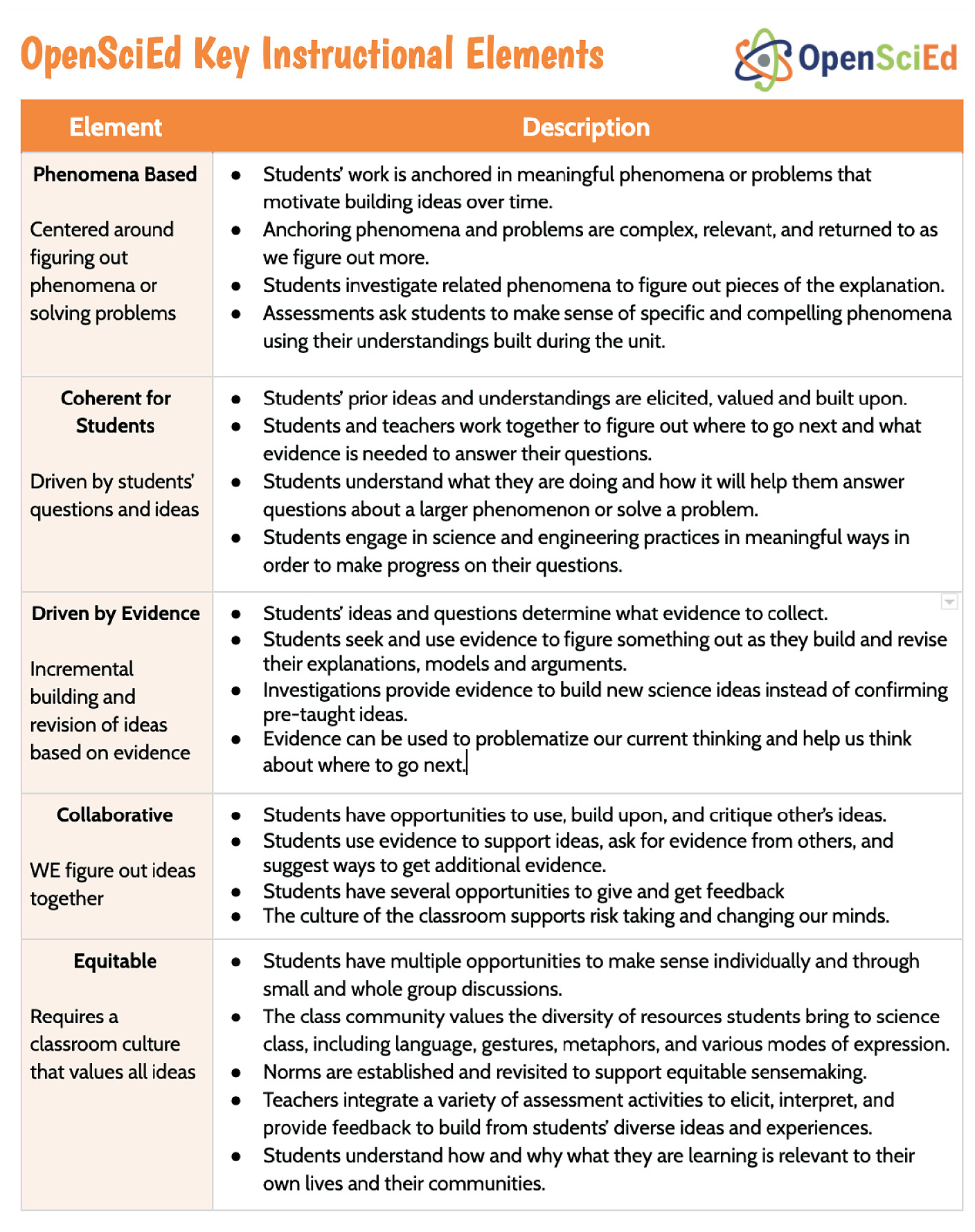
Description of key instructional elements.
Example 1: Examine classroom video or classroom practice to develop a shared understanding
To better integrate these key elements into classrooms, we need to develop a shared understanding of what they look like in practice. Engaging in a shared classroom experience (e.g., watching a video or observing a colleague) can help teachers work together to develop a deeper understanding of these key instructional elements.
For example, during the PD, participants were asked to watch a five-minute classroom video (see link to classroom video in Online Resources). The video was of a group of students from the OpenSciEd curriculum unit, How do things inside our bodies work together to make us feel the way we do? (Inside Our Bodies unit; Novak and McGill 2019; see link in Online Resources). This unit is anchored in the phenomena of a young girl, M’Kenna, who had not been feeling well; in it, students argue from evidence to explain what is occurring in her body. As participants watched the video, they were asked to reflect on the key instructional elements and how students engaged in this work. After watching the video, participants then talked in small groups for five minutes. They were asked to reflect on the question “What do you see the students/teachers doing that align with the key instructional elements?” Participants then shared out key ideas from their small group during a whole-group discussion.
During the PD, teachers brought up a variety of examples from the classroom video linked to the elements. For example, they talked about how it was phenomena based because the students were discussing M’Kenna’s specific symptoms and not body systems in the abstract. Furthermore, they discussed how it was collaborative such as when the middle student shared “You guys both answered my questions.” In terms of equitable, participants discussed how the students clearly valued each other’s ideas like when the student on the left asked his peer, “Wait, can I write your question down?” and had the middle student repeat her question so he could record it on his paper.
Example 2: Support individual reflection on practice
The key instructional elements can also be used to help teachers reflect on their own teaching to identify strategies as well as challenges or areas of improvement. During the PD, teachers individually reflected on successes/strategies and challenges/questions from their classrooms related to the key elements. They recorded their ideas on sticky notes and shared them with their small group. Then they posted their sticky notes on one of five pieces of large chart paper, each labeled with one of the five key instructional elements. Next, they engaged in a whole-group gallery walk and used three stickers to tag ideas that resonated with them (see Figure 2).
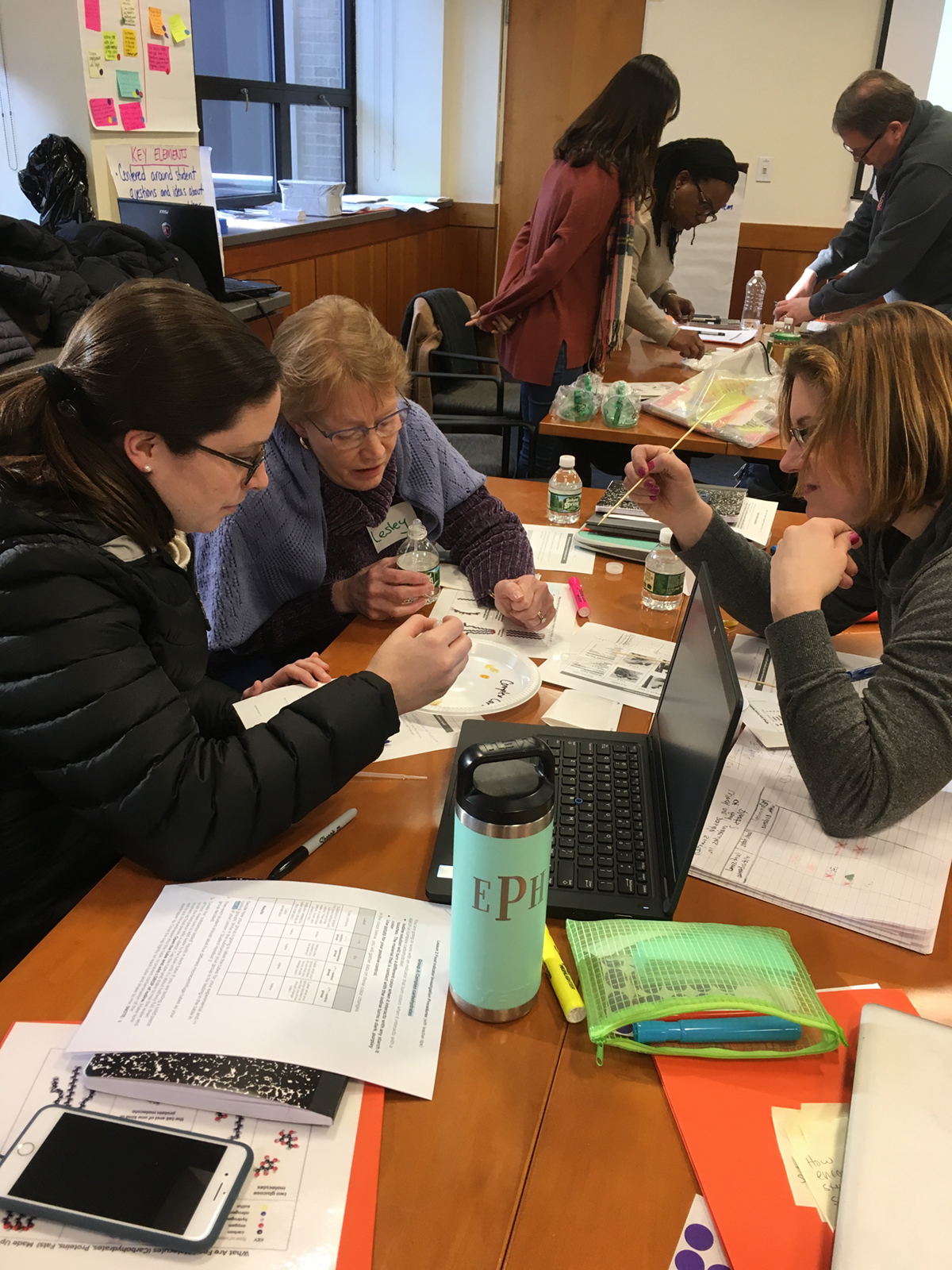
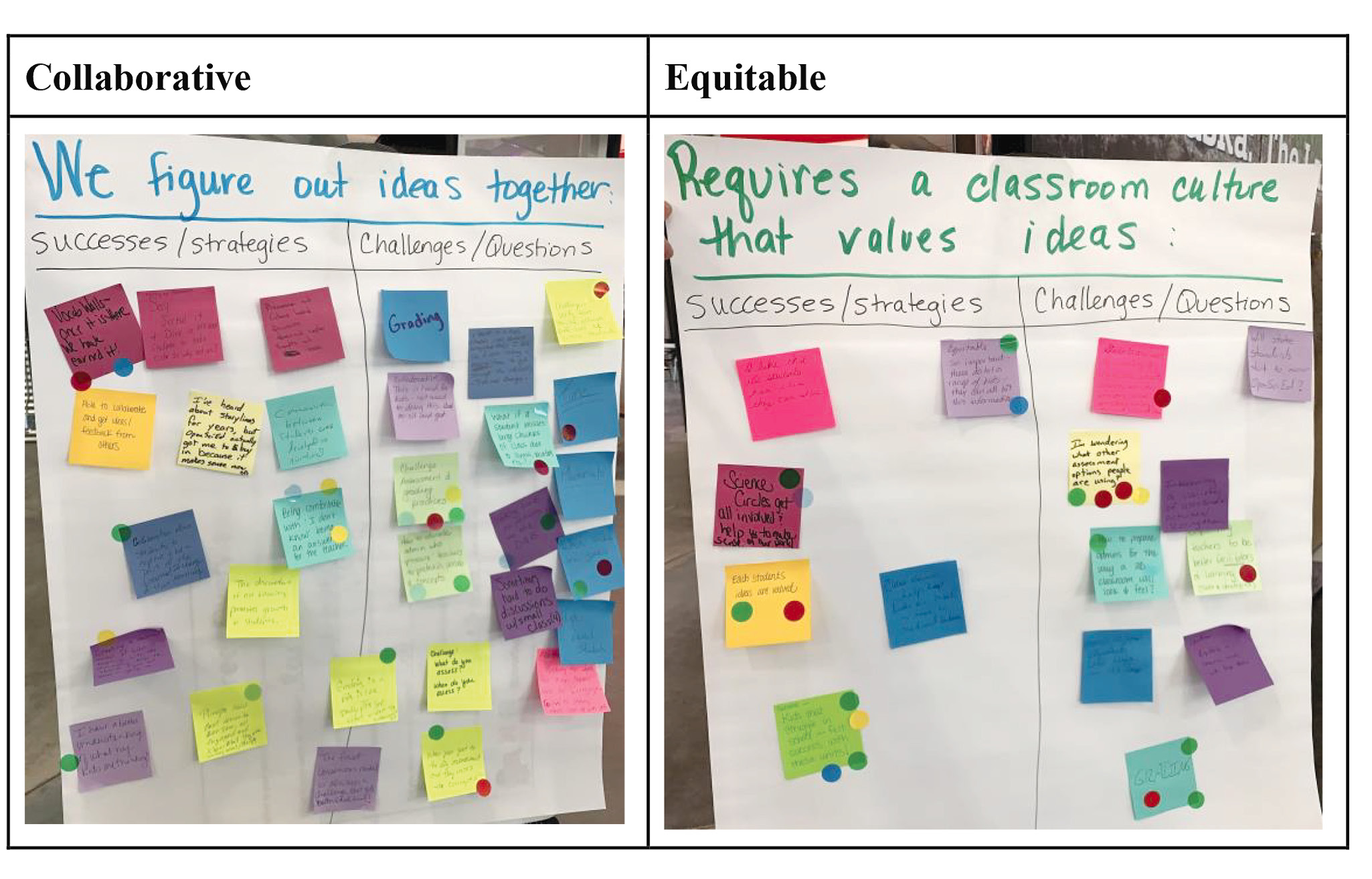
Reflection on key elements for strategies and challenges.
During this experience, teachers shared successes and strategies and also identified areas for which they wanted more support. For example, teachers noted that “the discomfort of not knowing promotes growth in students” and “I like that all students have ideas they can share.” Having teachers reflect on strategies and areas of growth can support deeper understandings of these key instructional elements and help teachers identify areas in which they would like to focus their attention in their own professional learning or future classroom instruction.
Example 3: Examine classroom video or classroom practice to identify teacher moves and strategies
The key instructional elements can also be used to identify and discuss teacher moves and strategies that support shifts in science instruction from learning about to figuring out. For example, the PD participants were asked to watch a second classroom video from the Inside Our Bodies unit. Before watching the video, each person at their table was asked to select a different key instructional element to focus on. As they watched the video, they then looked for moves the teacher did to support their instructional element. We next share part of the transcript from the classroom video and then highlight teacher moves participants discussed during the PD.
The transcript includes sections from both Part 1 and Part 2 of the video (see Online Resources for links to both parts). In this class discussion, Mr. C is introducing a lesson from the Inside Our Bodies unit to his eighth-grade students. In the previous lesson, the students had collected evidence by burning various foods (marshmallow, cheese puff, duck fat, and vegetable oil) to figure out what happens to matter when it is burned.
Mr. C: What questions does this raise? Remember, the big picture is about M’Kenna trying to figure out what’s going on.
Tyrone: How do the fuels that we used work in our bodies?
Mr. C: How do the fuels relate to our body?
Tyrone: Yeah.
Mr. C: Well, isn’t it clear? We put the vegetable oil and we lit it, right? So don’t you have little fires going on inside of you that are producing the energy?
Tyrone: Um, it’s not fires, but it’s something similar.
Mr. C: It’s not fires, but it’s something similar? Oh, Luciana has got an argument.
Luciana: Are you saying that there are fires inside of us?
Mr. C: I don’t know, do we? How did we get the combustion reaction to get going with the vegetable oil? What did we have to do?
Tyrone: We had to light it on fire.
Mr. C: On fire, right? In order to release the energy. So if that’s how we’re getting our energy, you’re saying, we want to see, “How does this happen in our body?” I don’t know. We lit it on fire. Do we need to light us on fire? Put fires inside?
At this point, Mr. C had the students break into small groups to consider the question: “Does a chemical reaction between food and oxygen happen in our bodies?” He asked the class “How could we investigate this? How can we try and figure this out? . . . Think about what kind of data would you want to collect.” As the students were talking in groups, one pair called Mr. C over.
Damien: So Mr. C, don’t you have a sensor that can measure carbon dioxide?
Mr. C: I do.
Damien: So I was thinking maybe you can measure, not that we can do it, but you can measure the carbon dioxide inside of the body because normally when you burn something carbon dioxide’s released.
When the class came back together, Mr. C had Damien share his idea with the whole class. Collaboratively, the class decided to use Damien’s idea that a carbon dioxide sensor would be a great way to collect some evidence to answer this question of what is occurring inside our bodies.
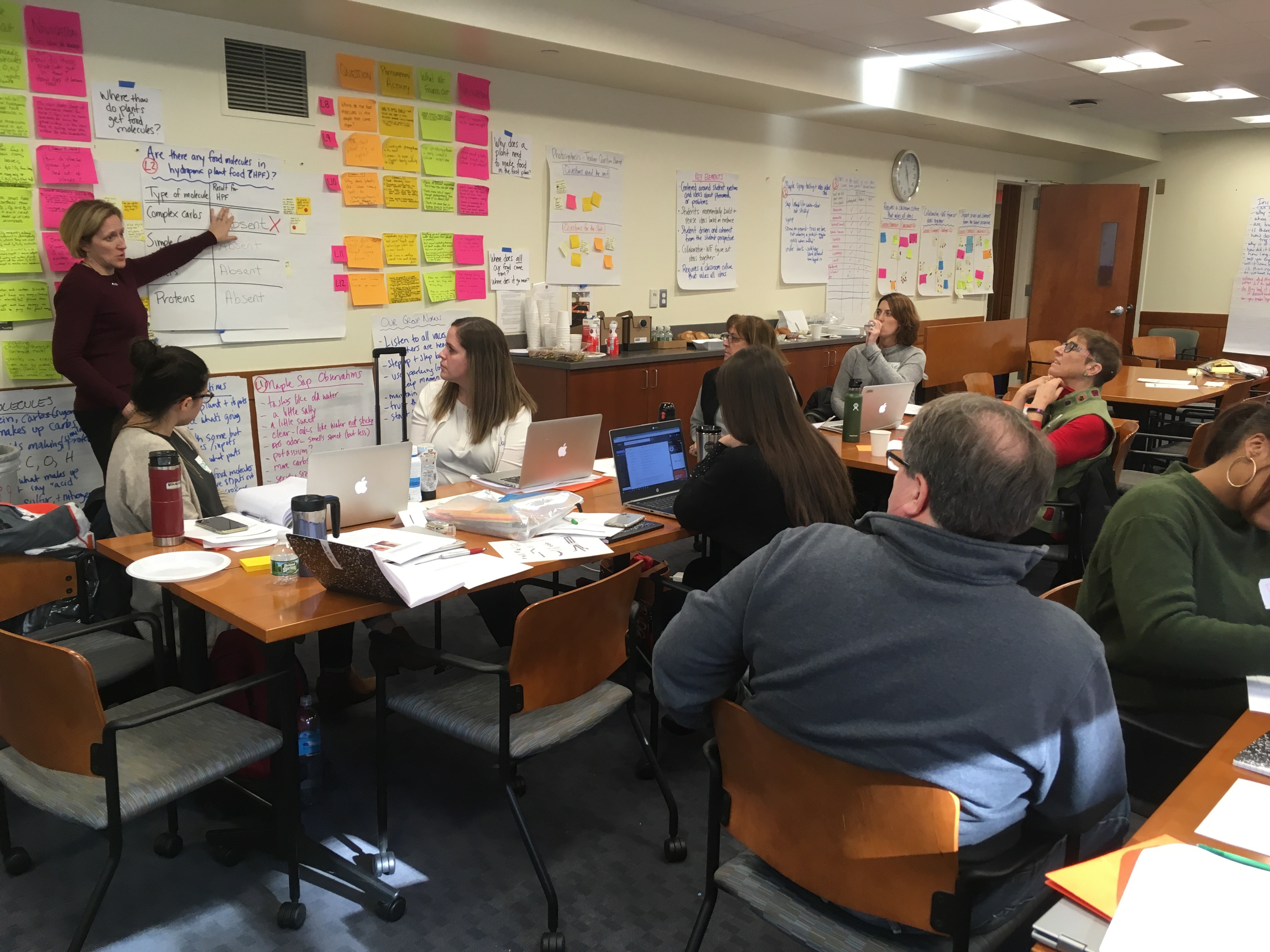
Analyzing the video through the lens of key instructional elements highlighted numerous teacher moves and instructional strategies. For example, in this example Mr. C began this lesson by saying, “What questions does this raise? Remember, the big picture is about M’Kenna trying to figure out what’s going on.” Starting with student questions links to the element of coherent for students by eliciting and building on students’ prior ideas and understandings. Furthermore, connecting to the big picture connects to the element phenomena based by reminding students to anchor their questions in the complex phenomenon the class had been exploring together. In Part 2 of the video, Mr. C asked the class “How could we investigate this? How can we try and figure this out? . . . Think about what kind of data would you want to collect” before splitting students into small groups. The questions and language he used here connects to driven by evidence as he encouraged students to think about what evidence to collect next to answer their questions. Furthermore, the strategy of first having students work in small groups before sharing out as a whole class supports the element collaborative because it offers a safe environment for students to share their ideas with their peers. This also provides an opportunity for formative assessment as Mr. C listened in on the small-group discussions. Furthermore, when the class came back together, Mr. C called on Damien who shared an idea that was taken up by the class and investigated, which highlights the equitable element. Analyzing the video highlights both talk moves (e.g., What questions does this raise?) and instructional strategies (e.g., small groups before a whole-class discussion) that support this classroom shift to equitable science sensemaking.
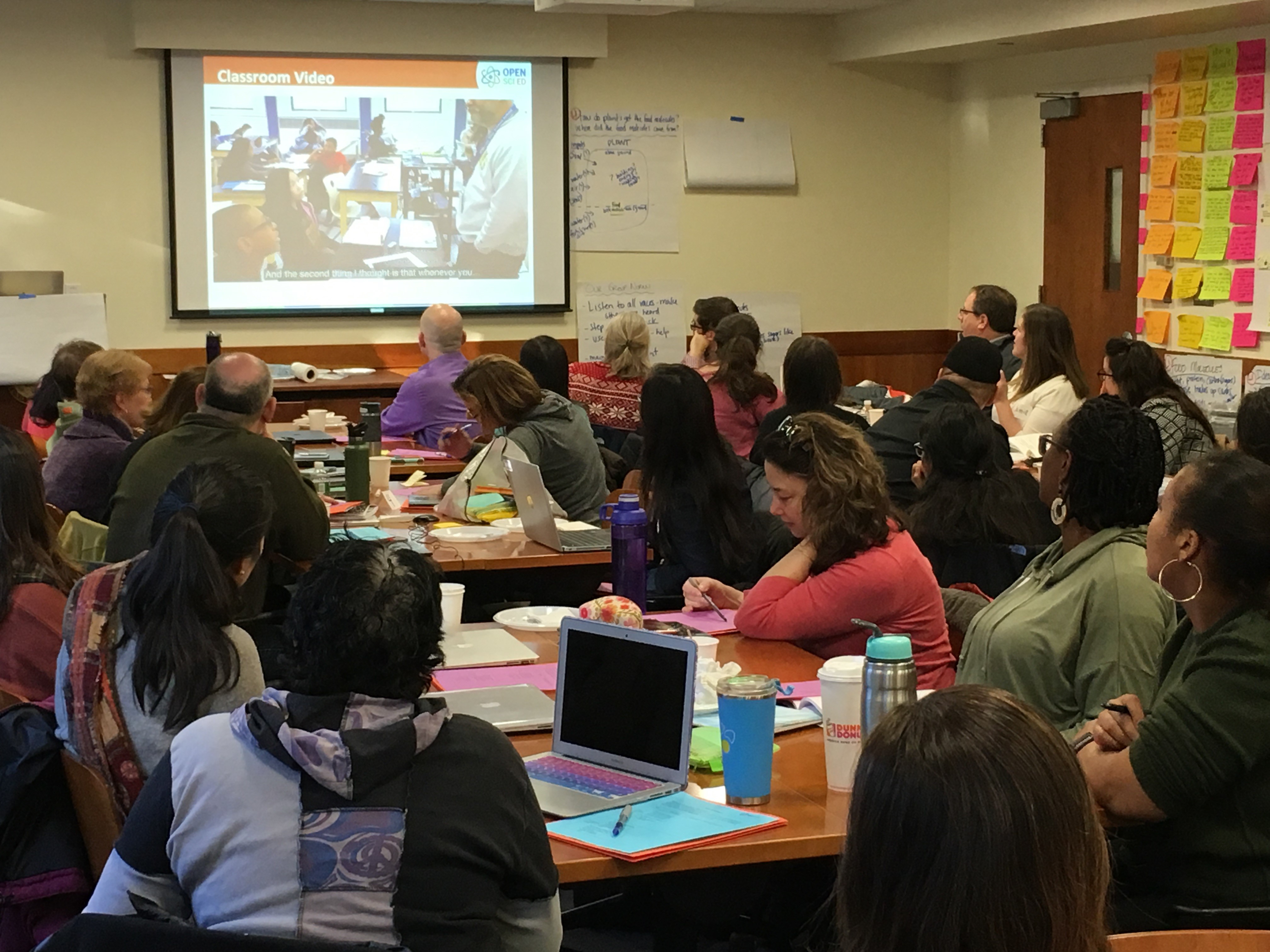
Example 4: Using the key instructional elements to analyze curriculum and resources
The key instructional elements can also be used to analyze curriculum or other resources to identify how closely they align with recent shifts in science teaching and to consider areas that can be improved. For example, a curriculum could be analyzed for alignment to the NGSS with the first element by examining to see if it is phenomena based. Looking for phenomena in a traditional human body unit might highlight that the unit starts with a list of human body systems, describes each system separately, and then at the end has students think about the systems in relation to real human cases (i.e., phenomena). An analysis of the curriculum would reveal that the phenomena in the curriculum do not “motivate building ideas over time” or are not “returned to as we figure out more.” Rather, the only phenomena are at the end of the curricular unit. This analysis could support teachers in adapting the curriculum to better support the figuring out of phenomena over time or could result in the selection of a different curriculum that better aligns with the key element of being phenomenon based.
Conclusion
One way to help classrooms shift from learning about to figuring out is by looking through the lens of key instructional elements. We have found that using these elements as part of professional development can help support reflection on teachers’ own practice as well as the analysis of curriculum and other resources. These elements can also highlight areas of strength and areas for future improvement so that teachers can create instructional moments that engage students in collaborative, equitable science sensemaking through the exploration of phenomena. •
Online Resources
Classroom video—https://bit.ly/3jx0XQp
How do things inside our bodies work—https://www.openscied.org/instructional-materials/7-3-metabolic-reactions/
OpenSciEd—https://www.openscied.org
Part 1 of classroom video—https://bit.ly/3t22m4q
Part 2 of classroom video—https://bit.ly/2WyfF11
Katherine L. McNeill (kmcneill@bc.edu) is a professor of science education and Renee Affolter is a senior research associate, both in the Lynch School of Education at Boston College in Boston, Massachusetts. Michael Clinchot is a middle school science teacher in the Boston Public Schools.
NGSS Pedagogy Professional Learning old Teacher Preparation Middle School


